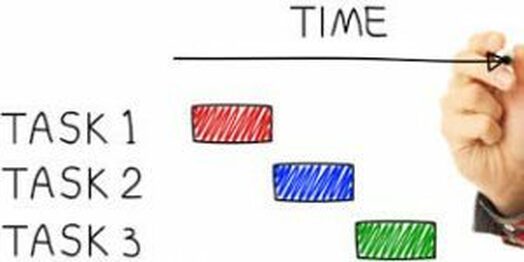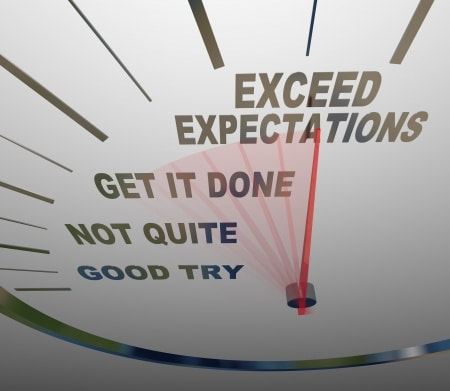|
You’ve found yourself in consultant heaven having more clients and projects than you know what to do with. Like a dog chasing the car you’ve managed to catch the car (lot’s of projects to keep you busy) but don’t know what to do with it (how to deliver successfully) now that you have it.
If you have multiple projects, multiple clients and or just more work than you know what to do with consider these steps to improve your day and operating rhythm so you can focus on successfully delivering on your projects while keeping your happy customers: Communication Protocol – happy customers are informed customers. Customers don’t like to be treated like mushrooms – fed piles of crap while being kept in the dark. Establish a daily or weekly communications agenda which keeps you on track of your client updates and check-in’s. Consider creating a communication checklist via Microsoft Excel to help with consistency. (or see ‘Invest’ for tools to help with this) Invest – don’t be cheap. Make the investment in a project management tool which will help you stay on track with your projects while giving you a professional interface to use for customer presentations, etc. There are literally dozens of tools you can choose from like Asana, Jira, Microsoft Project, etc. When your work is structured, nice and tidy, your results will reflect it. Establish Customer Expectations – read this link on how to set customer expectations Get Organized – everything from your work space to how you spend your time should be constantly reviewed and altered to improve performance. Time management is key to your success, ability to deliver and to obtain more work. Find ways to reduce busy work, unnecessary check ins or onsite visits with clients. Sometimes visits are crucial and needed, but not always. When reviewing your actual project tasks create different to do lists/ project task lists for each client then merge them so you have one list broken down by all of your clients and required activities per day and week. (FYI – most project management tools do this for you while producing Gantt Charts which can be shared with customers – another reason to invest in technology.) Delegate – Undoubtedly there are aspects of your projects you just don’t like to do yourself. Do you know other people that can help you with some of your work? It pays off to have a small trusted group of allies, other consultants such as yourself, that you can bring in from time to time to help with various parts of the project. This allows you to focus on the work you enjoy most. Say No – one of the most powerful things any professional can do is to say ‘No’ to things or opportunities which don’t align with their key focus. This goes back to how we choose our time and where we spend it. We can’t be everything to everyone. If a customer makes a request that is outside of your capabilities kindly say ‘No’ then point them in the right direction to a possible solution elsewhere. #gogiver Key Take Away: Consider investing in a project management tool to streamline your work while having an organized infrastructure for your consulting business Action Item: Review all the projects you have concurrently and make a task and timeline list. Embedded those tasks into your week based on the deliverables then begin working towards fulfillment of those tasks.
0 Comments
As a consultant [freelancer, gig, moonlighter, etc.] we work in the capacity of ‘work for hire’ whereas we go in, do a job and work ourselves out of the picture. Then it’s onto the next job, rinse and repeat. This can be a fun way to make dough while providing that good ole ‘work life balance’ so many people love to preach about.
Where consultants typically run into problems is the work they’re performing on behalf of the client or end user isn’t clearly defined or even in writing. As a result, it’s common for consultants to find themselves in sticky, even legal, situations they don’t know how to navigate. Keeping your nose out of legal issues or poor project results really comes down to ‘deliverables’, however before we get there it’s important we keep top of mind two maxims which are the cornerstones of a consultants life: Know what you can do vs what you shouldn’t (don’t try to be everything to everyone, stay in your lane doing good quality work you’re confident you can deliver) Remove the he said she said situation (both consultant and client should sign a Statement-of-Work, SOW, which clearly spells out responsibilities of each party, cost, duties within the project and their respective deadlines, these are referred to as ‘deliverables’, before the project starts) Establishing deliverables with a client can be tricky. It’s important both parties agree on the expectations of the work to be performed and the consultant can actually deliver the goods. Remember, the SOW is a legal document. If you over commit and under deliver you could find yourself in hot water. If you’re a consultant and are establishing deliverables on a project with a client make you keep the following in mind: 1. Can you deliver what the client expects and are those expectations realistic? 2. Challenge the customers’ expectations – does the customer understand what they want and does it match up with what they’re asking? 3. Communicate ahead of time – if you need help, are missing info or are at risk of missing a deadline, don’t wait till the very last minute to communicate. At the first point in which the issue arises inform your client of the situation and in the same conversation come prepared to offer a solution. Communication is key to successful project completion. 4. Focus on performing at a high level while delivering early, this will position you to be awarded more business in the future from said client Key Take Away: Get all work agreed upon in writing via an SOW and ensure you can actually deliver the goods. Communicate in the moment and often while focusing on delivering ahead of schedule with a high level of quality output. Action Item: Run a gap analysis on your existing projects to see if there are areas you may be at risk. Once you’ve identified those areas of risk on your current projects, come up with a viable solution to address it and proactively communicate with your client the situation and next steps. Ask for their buy in, then move forward.
|
Visit Square-1's
|
|






 RSS Feed
RSS Feed


